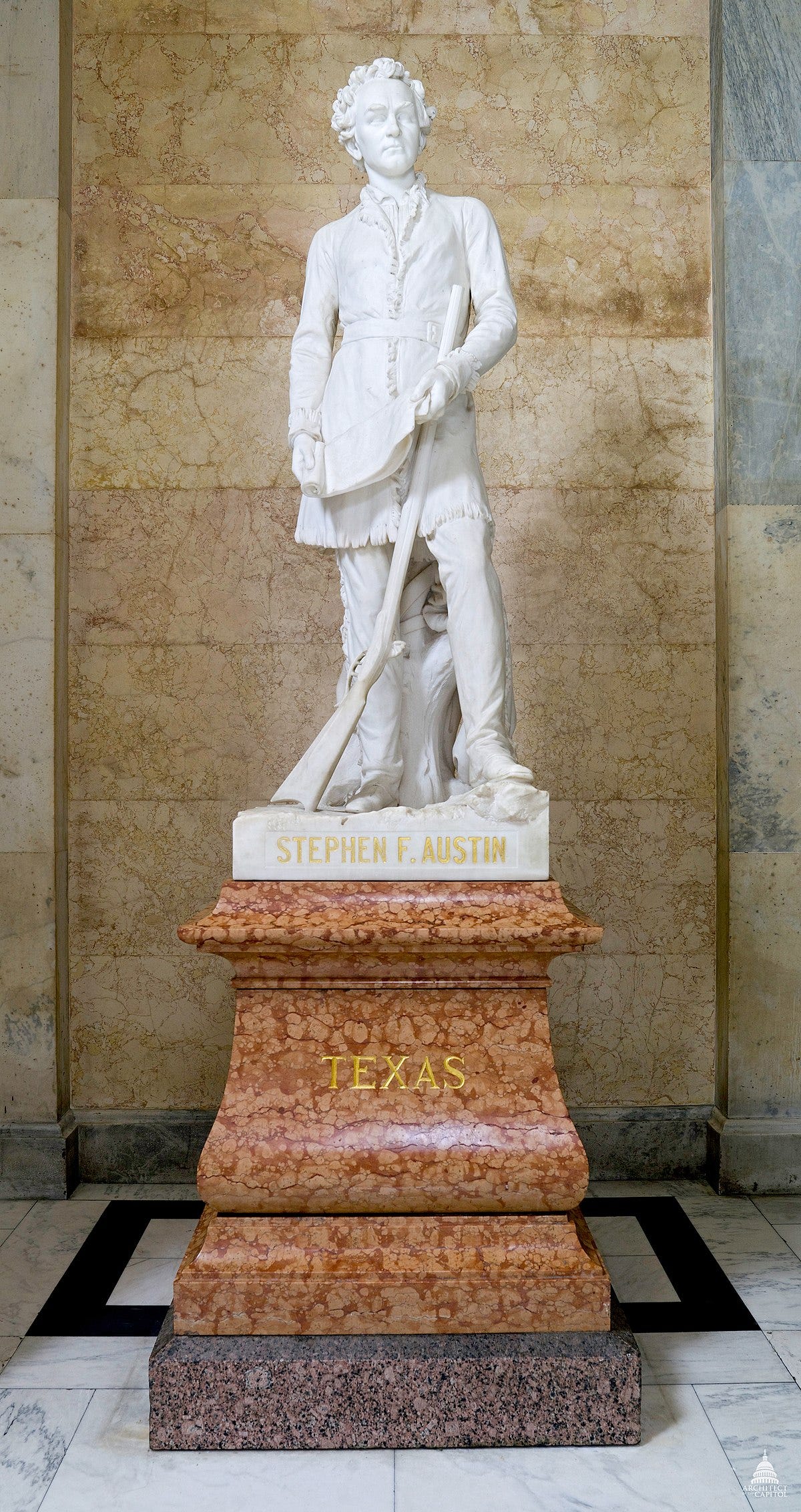Stephen Fuller Austin was born in southwestern Virginia on November 3, 1793. His father Moses Austin had established a mining town along with his brother and several partners. Moses came to be known as the “Lead King”.
When Stephen was four years old, his family moved to Missouri, and there they embarked on another lead mining endeavor. It seems that the Virginia lead business had failed and Moses left to avoid imprisonment and the consequences of debt.
The area in Missouri that the Austins settled in was then part of Spanish Louisiana. The Spanish colonial government granted Moses one league (4,428 acres). In return for the land grant, Moses swore allegiance to the Spanish Crown and stated he would settle some families in Missouri.
In 1803, Missouri became part of the United States as part of the Louisiana Purchase. Moses Austin founded the Bank of St. Louis, but he lost his entire fortune when the bank failed during the Panic of 1819.
Moses then traveled to Spanish Texas and presented a plan to colonize Texas with Anglo-Americans to Governor Antonio Maria Martinez. He was awarded a land grant to settle 300 families.
However, Moses fell ill and died of pneumonia in June of 1821. He had directed that his empresario grant be taken over by his son Stephen. Leaving this instruction…”Tell dear Stephen that it is his dieing fathers last request to prosecute the enterprise he had Commenced . . .”—Moses Austin
Stephen was at first reluctant to take on this responsibility…but in the end, he decided to move forward with his father’s plan. Problems were quick to arrive. The first being Mexico’s gaining independence from Spain which invalidated Austin’s land grant that had been authorized by Spain.
Stephen then traveled to Mexico City and was successful in persuading the New Mexican government to recognize his father’s empresario grant.
By late 1825, Austin had brought the first 300 families to his settlement, the Austin Colony; these 300 are now known in Texas history as the Old Three Hundred.
As time went on and more settlers settled, the settlement began to resent Mexican governance and talk of separation was prevalent. In 1833, Stephen Austin went to Mexico City to present some demands from the Texas settlers. It didn’t go well and Austin was arrested. Austin remained in jail in Mexico City for a year and a half: he was never tried or even formally charged with anything.
When he was finally released in 1835, he knew that no deal could be had with Mexico…separation was inevitable.
For a short while, Austin was the Commander of the Texas Military, but was soon replaced. Austin then traveled to New Orleans to solicit loans, volunteers, and arrange credit for munitions and equipment which was his stronger suit. He returned to Texas when independence was won.
Austin accepted the nomination to run as the first president of the Republic of Texas, but lost to Sam Houston. Austin accepted the Secretary of State appointment, but only served 2 months before he fell ill of pneumonia, and died at the age of 43, on December 27, 1836.
Upon hearing of Austin’s death, President Sam Houston declared: “The father of Texas is no more. The first pioneer of the wilderness has departed.”
Stephen F. Austin is the subject of one of the two statues representing Texas in the National Statuary Hall Collection in the U.S. Capitol. Sam Houston is the other.
Diana Erbio is a freelance writer and author of “Coming to America: A Girl Struggles to Find her Way in a New World”. Read more in her series Statues: The People They Salute, Table of Contents and visit the Facebook Page. Subscribe to her Substack Newsletter




Thank you Diana. This is very interesting and informative. The poor Austin family certainly had more than their share of problems. I didn't know of this before.
Excellent! Thank you!